Ayon S10-II Signature
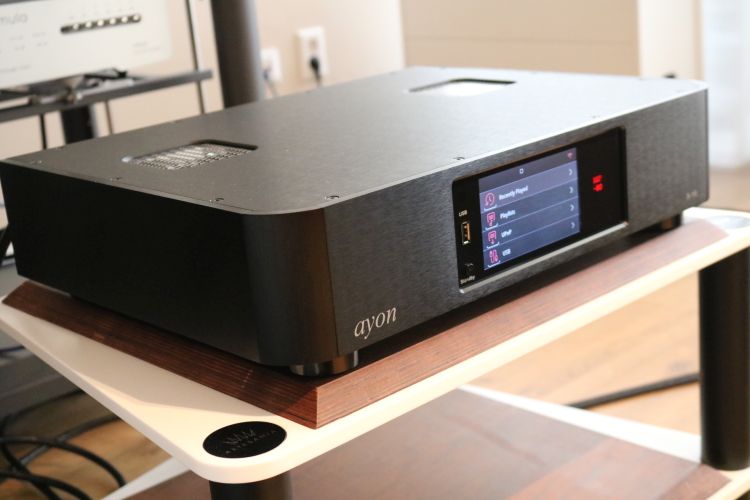
DSD upsampling
Although I had mixed results with the DSD upsampling offered by the CD-T II CD transport, this turned out to work absolutely fabulously with the S-10 MkII. Whereas I much preferred the direct non-DSD upsampled PCM stream with the CD-T II for its tighter and more lively sound, enabling the function with the S-10 MkII has only benefits. The bass remains as tight and articulate while the treble becomes a little airier and the soundstage becomes considerably deeper and more engulfing, without softening, thinning, or blurring anything. Between 128 and 256 fold, the differences are smaller, but still, they are profound enough for me to have a preference for the latter.
Throughout my listening tests and in various speaker- and amplifier combinations, I kept switching back and forth but, in spite of my general preference for PCM, I consistently prefer the DSD upsampled delivery.
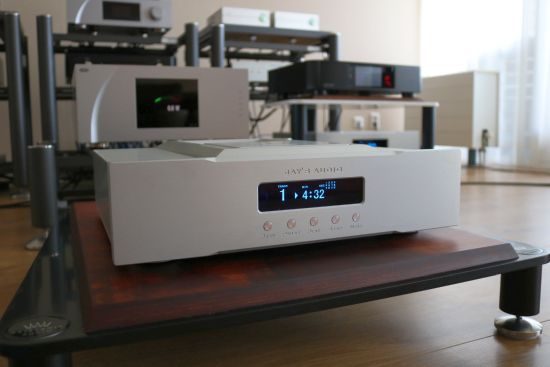
CD playback
Using the Jay’s Audio CDT2-Mk2 CD transport I also tested the S-10 MkII’s digital coaxial input. Although both the player and the DAC offer I2S they are sadly on different connectors so I could not try this. Regardless, the sound via Coax was also fabulous. The CDT2-Mk2 uniquely uses a Philips CDM-4/19 swing-arm mechanism and these transports’ fluid delivery is present here, too. It’s very different from any music server playback, less accurate maybe but also less factual and very easy to get into. Smooth, fluid, and highly lyrical, this CD/Tube combo encourages to play CD after CD.
While I have heard other ESS Sabre-equipped DACs sound flat and lifeless, this certainly does not go for the Stealth. But while it has a bolder and more impactful delivery than the S10-MkII it is also less subtle and less finely resolved. However, these differences are also not earth-shattering and in practice, both products make music in the Ayon-typical toe-tapping, dynamic, and highly engaging manner. Although I can’t make any hard claims without having heard the basic S-10 MkII version, it seems plausible that the increased fluidity and refinement are specific benefits that come with the Signature Upgrade.
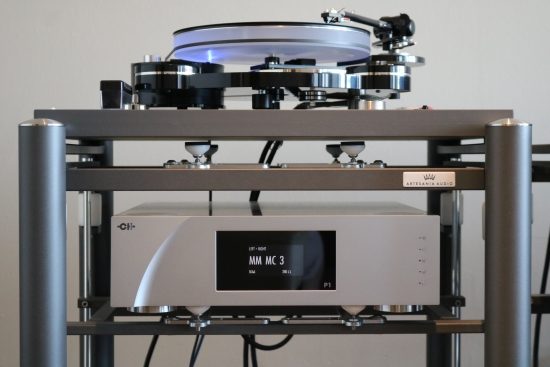
LP via the analog input
Using the Origin Live Calypso mk4 turntable with ViRa Aidas MC cartridge via the CH Precision P1 phono preamp either into the Stealth or the S-10 MkII, I set out to see how the S-10 MkII differed from the Stealth.
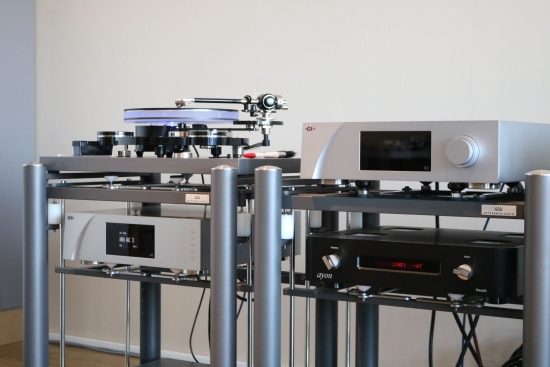
Rack placement
The Stealth worked most synergistically when set up on the Artesania Exoteryc rack which lends it some more transparency and refinement. Conversely, the S-10 MkII worked more synergistically on the Artesania Modular rack which lends it more drive and slam. However, as mentioned before, the differences between these two Ayons are not night and day and I’m sure that they will both work well on a wide range of audio racks.
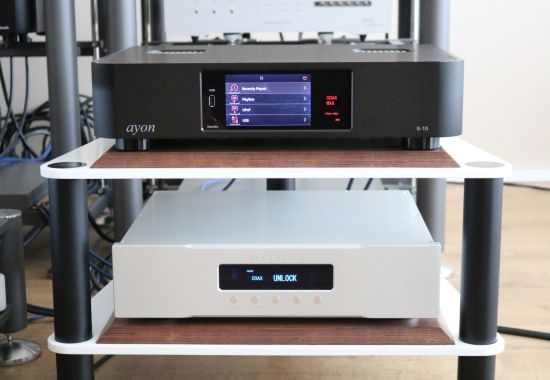
As a preamp
The S10 MkII, direct into the power amp using Vermouth Reference XLR cables, sounded even more solid and chunky (in a good way!) than via the Lejonklou Sagatun preamp while retaining excellent treble fluidity and a great sense of flow. Clearly, the Ayon’s preamp functionality is not just an afterthought as it can be with some DACs that start to sound flat and overly dry when used without an analog preamp. With the S-10 MkII, an analog preamp can be omitted without any penalties. Via the Lejonklou is more supple still but I can’t really say that I prefer one delivery over the other. Both make my feet tap and both make music in a highly lyrical manner.
After finishing the review I read in the manual that the twin DMP switches on the bottom are to be used when deploying the S-10 as a preamp directly with a power amp. DMP reduces the level by 6dB and increases the damping factor, thereby reducing the audibility of tube-related noises. The manual doesn’t go into effects on the sound quality but going from this, I’d wager that DMP stands for “damping”, of which you do not want to have too much as it can reduce the musical flow. Perhaps it was worth checking but all I can say is that the S-10 never made any noise besides sweet music even when connected to the power amp directly.
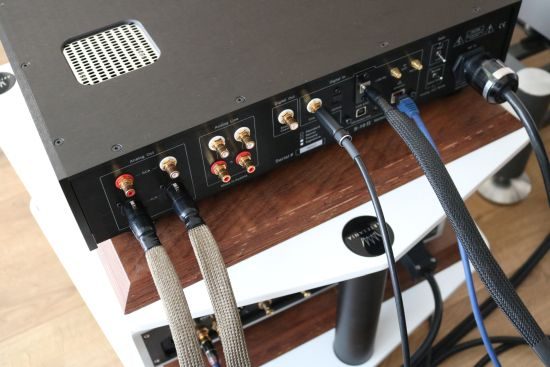
XLR/Cinch outputs
The S-10 MkII’s output stage is built in true balanced form which means that the best way to connect it should be via its XLR outputs. Using a range of cables and with the S-10 MkII as a DAC and preamp straight into the CH A1.5 power amp, I set out to put this to the test.
Now, this is always a tricky assessment because it involves many variables, some of which have nothing to do with the source component’s outputs and this is further complicated by cinch and XLR cables tending to differ from one another even when of the same type and made by the same manufacturer.
The Final Touch Audio Ganymede XLR cable provided a very nice alternative to the Vermouth. Dreamy and sweet and very gentle, the sophisticated Ganymede is not as “on edge” as the Vermouths but it retains the speed and a big portion of the drive. Although it is perhaps not as immediately impactful and “impressive” as the Vermouths or some other cables, its lush and easy on the ear yet truly hi-res delivery soon grows on you, making it hard to switch back to soberer and more earthy sounding cables.
Especially with the Martin Logans, this combination worked very well. With the Kroma’s, which are relaxed and full-bodied themselves, I found that the presentation was better balanced when using the Vermouths. What also worked surprisingly well with the Ayon and the Kroma’s are the very affordable Siltech Paris MXT interlinks. Less colorful and full-bodied, they counter with very clean and articulate bass and an open midrange which works highly synergistically in this combination. Meanwhile, the Ayon proved that its output stage works splendidly with a wide range of cables, fully leaving the choice to the buyer rather than imposing restrictions.
MkII upgrade
Fortunately, the MkII upgrade will become available for existing owners of the S-10. As of yet, no pricing information is known.
Conclusion
While not inexpensive, the S-10 MkII offers a very complete package. It’s not only a streaming endpoint and a DAC but also an analog preamp complete with two analog inputs. And, unlike many competing products, the Ayon’s preamp can actually replace a very good separate analog preamp. I want one! Be careful. Because after having given it a listening session, I think you will want one, too.

Videos on the Hifi-Advice YouTube Channel
How Sooloos became Roon
HFA Front Page
More Ayon
Ayon CD-T CD transport (mini review)
Ayon Stealth and CD-T-II
Ayon Spirit III
Ayon Sigma DAC
Ayon Orbis preamp (mini review)
Ayon Scorpio and S3-Junior
External Links
Distributor for the Benelux: Mafico
Manufacturer: Ayon Audio
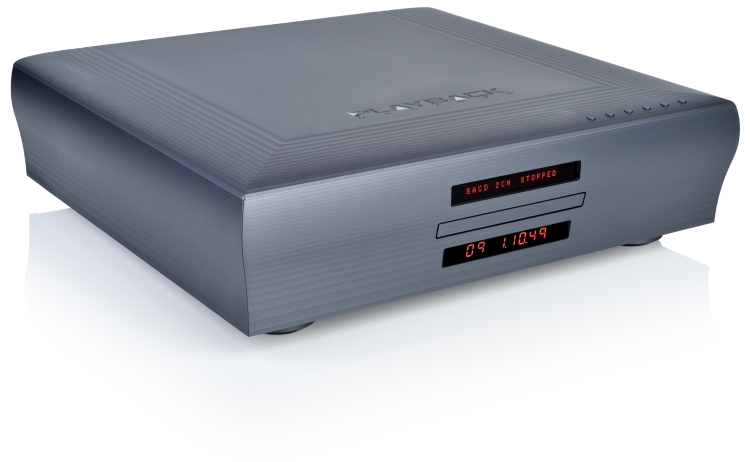







Hoi C. een Wadia 16 is toch onderhand wel een beetje ingehaald door nieuwere spelers???
Hi Vincent,
I did not mention the Wadia 16, just the classic Wadia sound in general by which I refer mainly to the solidity and timbre. While the greatest Wadia products IMHO such as the S7i player and 521 DAC have, in some respects, been improved upon by newer products (treble definition and resolution, for example), I wouldn’t claim that these products are beaten overall, certainly not by equipment costing similar money as the Wadias second-hand. Even a Wadia 25 DAC (the DAC part of a Wadia 16) still sounds really great to me but it is admittedly also quite dark and dry. If fluidity, resolution and treble air are of the utmost importance to you then you could say that the 25 is certainly outdated. If solidity, dynamics, bass articulation and timbre are more important then you could say that it still performs on a very high level. You see, it is a relative matter.
The main issues with otherwise great classic products is that protocols and interfaces get outdated and, of course, at some point they may go off-spec and require service. Also, as a reviewer, I cannot use a product that does not support DSD, USB or any of the streaming functionality, let alone refer to it when it isn’t even available in stores.
I have a chance to buy one of these units…I am struggling with whether I go with this s10 II, or the Auris Pre and separate DAC. Obviously I’d be forgoing the streamer capability, but sonics come first. I know you made some comparisons to a separate DAC from Ayon, but be interested in your thoughts on a Dac with the Auris II Pre amp. One such DAC I had in mind was the Rockna or I could choose a Ayon DAC. I like a SS/Tube combo but open to your thoughts since you have had a chance to listen to some of these units.
Thank you!
Hi Jeff, I’ve not heard the Auris, only the older Ayon Orbis preamp and, of course, the Stealth. The S10 is a really great DAC tied to a superb streamer along with analog inputs. Re-reading the review now I see that I omitted some content describing the sonic differences between the Stealth and S10’s analog inputs. Alas, I cannot recall if I actually conducted that test and if so, what were the results. I can only imagine that they might be comparable in quality to those on the Stealth. With the Stealth, I have done several experiments using it as a pure analog preamp with an external DAC. In all cases, I found that the Stealth sounds best (most balanced, cohesive and musical) when using its built-in DAC. Also, getting combined functionalities in a single unit saves a lot of money.